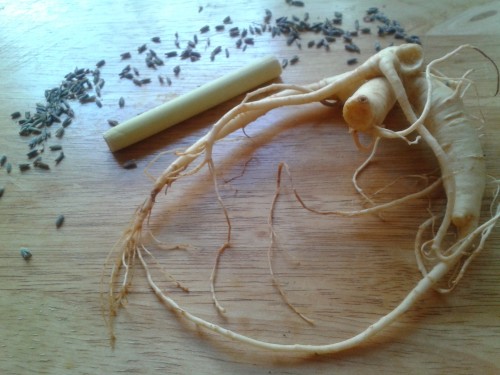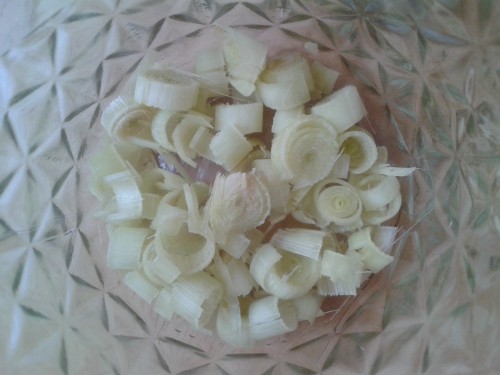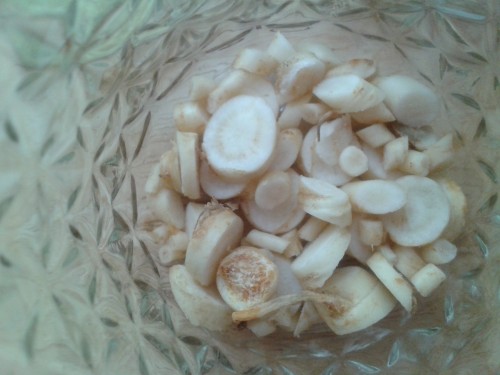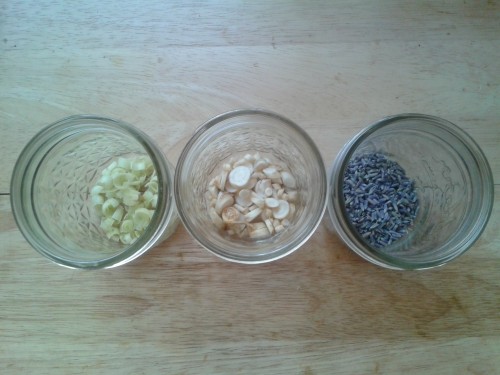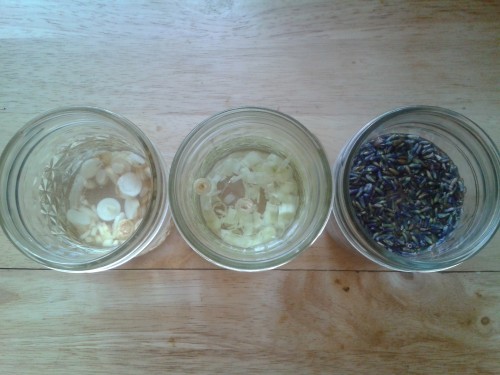What are Bitters and Why Do They Matter?
Bitter is a term that has come to be associated with primarily negative characteristics, in other words something that most people would rather keep out of their lives. The emotional terminology is likely derived from the physical reaction one experiences from tasting something with a bitter flavor.
Thus, for many reasons, the bitter flavor seems to have mostly slipped out of usage and favor in the western modern diet. However, that very reaction that causes you to pucker and even recoil gives hint to why bitterness is so valuable.
The bitter flavor stimulates the production of digestive secretions, beginning with saliva, (which is why your mouth instantly starts watering in reaction) and moving onto other important fluids like Gastric Acid and Bile. Gross, sure, but super important; these secretions all act as solvents that break food down so that it can be properly absorbed.
This physical reaction to the bitter flavor ignites the appetite as well as smoothly facilitates the digestive process. Bitters also encourage Peristalsis, which is the series of muscle contractions, starting in the esophagus, that move food to different stages of the digestive process.
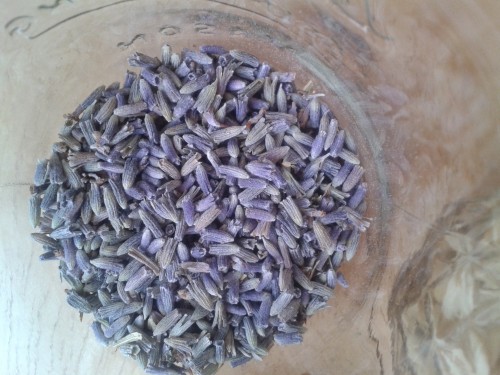
The 5 Flavors
The very idea of flavor profiles and their therapeutic uses originates in Chinese Medicine. The human tongue can sense five unique flavors: Pungent, Salty, Sour, Bitter, and Sweet. All five flavors have unique actions and processes that they stimulate in the body. Most foods contain a combination of these flavors, it is more rare to find an item that only represents a single category. Pungent is probably the flavor with the most diverse examples as it refers to flavors we consider to be acrid, spicy, hot, or aromatic.
“In the diet of a healthy person the flavors should be balanced, with sweet flavors predominating, because the Earth Element and its associated flavor – sweetness – are considered the most central aspect of the body and its nourishment.” “It means that each day the sweet flavor – the primary flavor of most carbohydrates such as grains, vegetables, nuts, seeds, and fruit – should be accompanied by small amounts of bitter, salty, pungent, and sour foods.” (Healing with Whole Foods)
The main issue we encounter in the typical American diet is imbalance of intake. The quantity of each flavor is actually very important. Even if a flavor is normally useful for an organ’s function, too much of that flavor has an opposite and weakening effect.
Unfortunately, even though sweetness is the primary flavor humans are supposed to intake, it was never meant to be used in the concentrations and refined natures that we are practically addicted to them in these days. Sweetness is almost always a primary candidate for introducing imbalance in the diet. Almost all cultures have had a practice of using the bitter flavor in their diet regularly and would be confused by the lack in the common American diets today.
All sweeteners such as sugar cane and licorice are both sweet are bitter before they become refined and are exclusively sweet. Our bodies evolved to associate these two flavors. So even though they have become detached over time, when we are craving sugar, we are likely actually craving the bitter flavor as well, in balance.
To understand the context of the flavors and why learning about bitters is even important at all, it is helpful to know what role each flavor plays in health and why we are each attracted to different tastes based on our palates.
Therapeutic Use of the 5 Flavors
|
Bitter |
Sour |
Salty |
Sweet |
Pungent |
|
Cooling |
Cooling |
Cooling |
Warming |
Warming |
|
Contracting |
Contracting |
Centering |
Expansive |
Expansive |
|
Clears excess |
Absorbent |
Moistening |
Moistening |
Stimulating |
|
Enters the Heart and Small Intestine |
Enters the Liver and Gallbladder |
Enters the Kidneys and Bladder |
Enters the Spleen / Pancreas & Stomach. |
Enters the Lungs and Large Intestine / Colon |
|
Encourages energy to Descend |
Dries and Firms |
Moves energy Downward and Inward |
Gives simultaneous Energy and Relaxation |
Moves energy Up and Out |
|
Clears Heat & Stagnancy, Drains Dampness |
Dissolves minerals for Assimilation |
Detoxifies and Purges |
Moistens Dry Conditions, Harmonizes |
Disperses Mucus & Stimulated Circulation |
|
Reduces Excess, Tonifies, Stimulates Digestion |
Breaks down and counteracts rich foods (fats and proteins) |
Increases Appetite and Improves Concentrations |
Soothes liver based aggression. Strengthens Spleen. |
Stimulates Energy. Improves sluggish liver. |
Examples of Botanical / Herb / Spice / Fruit / Veggie Bitters:
BITTER:
* Bitter: * Bitter AND Sweet:
Alfalfa Rye Chamomile Celery Asparagus
* Bitter AND Pungent: * Bitter AND Sour:
Citrus Peel (Also Sweet) Vinegar
Scallion Yarrow Valerian
White Pepper Sage Lavender
* Extra Strong Bitters:
Dandelion Root & Leaf Burdock Root & Leaf Chamomile Yarrow Hops
Valerian Chaparral Echinacea Pau D’Arco Milk Thistle Licorice
Mandarin Oregon Grape Root Yerba Mansa Gentian Root Osha Root
Some debate exists that Americans are so lacking in the intake of bitters that a phenomenon referred to as “Bitter Deficiency Syndrome”may be a primary cause of many common modern health problems.
“ Inadequate stomach acid will prevent the uptake of minerals, which will in turn rob the body of essential nutrition needed for wellness (even if those nutrients are being consumed as food or supplements.)” (Herbcraft – Bitters)
Bitters can be helpful for:
Constipation Gas Related Cramps Leaky Gut Syndrome Cravings (Food & Drug)
Indigestion Grounding PMS (Bloating, Digestive Upset, Moodiness)
Sluggish Digestion Supporting a Healthy Appetite (Especially after illness or traveling)
A lack of Bitters can lead to:
Aggravated PMS Sexual Organ Dysfunction Hormonal Imbalance
Migraines Indigestion Hypoglycemia Diabetes Abnormal Metabolism
Some experts even theorize that instead of using bitters as a treatment for symptoms, that the symptoms actually occur because of a lack of bitters in the first place.
Now, all that being said, how do you make the bitter flavor more fun and desirable to intake habitually? If the reason we already don’t eat bitter flavored things is because of the taste, we have to find better more desirable applications. While many people may think their taste preferences are set in place, your taste buds are actually replaced every 2 weeks on average! That leaves plenty of room for adjustment and growth. It’s time to acquire a taste for bitters!
Bitters in Cocktails: History, Production, & Usage
The main reason anyone is even really aware of let alone excited about Bitters lately is because of their usage in cocktails. (Woo hoo!) In this application, bitter plant constituents are concentrated with high potency vodka or grain alcohol to be used as a liquid. Until the late 1880s, any drink called a cocktail contained bitters. (i.e.: The Manhattan and the Old Fashioned) Bitters are considered to be the “seasoning” of a drink as salt and pepper are to food.
Bitters started to fade out of common usage around the 1950’s, but are now experiencing a revival throughout the country through people becoming more interested in making their own unique cocktail combinations to have fun and save money as well as learning the history behind Prohibition and the cocktails that started everything in the mixed drink scene during that Era.
When cocktails were initially popular in the late 1800s during the Victorian Era, bartenders needed to have the knowledge of how to make cocktails as well as how to manufacture all of the ingredients they used to create them. Most of the contributing ingredients and preparations originated from apothecaries of the day, such as: Tinctures, Tonics, Syrups, Cordials, Vermouths, and many more. In the original custom, cocktails began as Aperitifs. Aperitifs were always the first drink of the evening, taken around the time of appetizers to stimulate the appetite, increase frivolity, and begin the digestive process before the meal. They were often quite small, containing strong alcohol, botanicals, and bitter ingredients.
Examples:
Manhattan Elderflower Spritz Negroni Aperol or Campari Spritz
Sazerac Dry Martini Fernando Champagne Cocktail
The emergence of the heavy usage of bitters in cocktails occurred in Speakeasies during the 1920s Prohibition Era. Most Speakeasies were simply a wood plank placed on top of two barrels with a few chairs, usually in someone’s dingy basement. They were the first (illegal) socially acceptable venues for women (usually flappers) to drink with men.
Most Speakeasies only carried whatever alcohol they could manage to acquire at the time. Pretty much all of them tasted awful and some were even poisonous, containing Methyl alcohol. Mixed drinks, employing the potent flavors of bitters or imported alcohols, primarily came into existence to cover the terrible taste of the alcohol.
During prohibition, many bartenders fled to countries in Europe and the Caribbean where they could legally practice their trade. They found many new ingredients in these places and invented numerous revolutionary cocktails combinations that they eventually brought back after prohibition was repealed in 1933.
Although alcohol is a fun way to experiment with usage of the bitter flavor, it is important to implement with moderation as with everything else to keep a desired balance of well-being.
Alcohol is classified as a Pungent in terms of flavor profile. It can be helpful with improving a sluggish liver, but should only be used as such short term, as it ultimately causes cellular degeneration, especially in brain cells.
How to Make Bitters!
1) The easiest way to start is to pick a desired item or items that fits within at least 1 of the 3 categories stated below in step 2. {i.e.: I used Fresh Ginseng Root, Fresh Lemongrass, and Dried Lavender Blossoms}
You can choose to make your bitter individually so as to retain control over possible combinations, or you can decide on a drink you like and make a combination whose flavor profile would complement it.
2) It is common for bitters blends to contain 3 different flavor components for depth and complexity of flavor as well as balance. These 3 flavor components are:
* Dried BITTER Root or Bark
* Dried Herbs and or Spices (Can be bitter)
* Dried Fruits and or Veggies (Can be bitter)
3) Flavors must be extracted from plant material using a high proof vodka (90 – 100 proof).
4) Place desired ingredient into sterilized mason jar or other wide mouth glass container (of a proportionate size to desired amount of outcome). Make sure whatever ingredient you are using at least covers the bottom of the jar, different amounts will make flavor weaker or stronger.
5) Add Vodka until ¼” of space is left below the top of the jar. (Under filling is alright)
6) Seal tightly, label with Ingredient(s) and Date made, and give it a really good shake!
7) Store in a dark place. Shake every few days to incorporate flavor thoroughly. Strain ingredients out when ready to use using appropriate straining method for plant matter. Enjoy in favorite cocktail, hot beverage, seltzer, or juice! As these tinctures are simply flavor extracts, you can even use them for flavoring in baking and cooking if desired!
The extraction process takes approximately 1 week (7-10 days) for bitter roots, barks, and dried herbs and spices. It takes approximately 4 weeks (21-28 days) for dried fruits and veggies.
If you come up with a great cocktail recipe with any of the bitters you make, I’d love to hear about your delicious ideas my charming companions!
References and Further Information:
www.herbcraft.org/bitters.pdf www.mountainroseblog.com/understanding-herbal-actions
“Speakeasy” By: Jason Kosmas & Dushan Zeric
“Healing with Whole Foods” By: Paul Pitchford
To Buy Pre-made Bitters, Consider:
DRAM Apothecary (www.dramapothecary.com)
Fee Brothers (www.feebrothers.com)
The Bitter Truth (http://the-bitter-truth.com)


